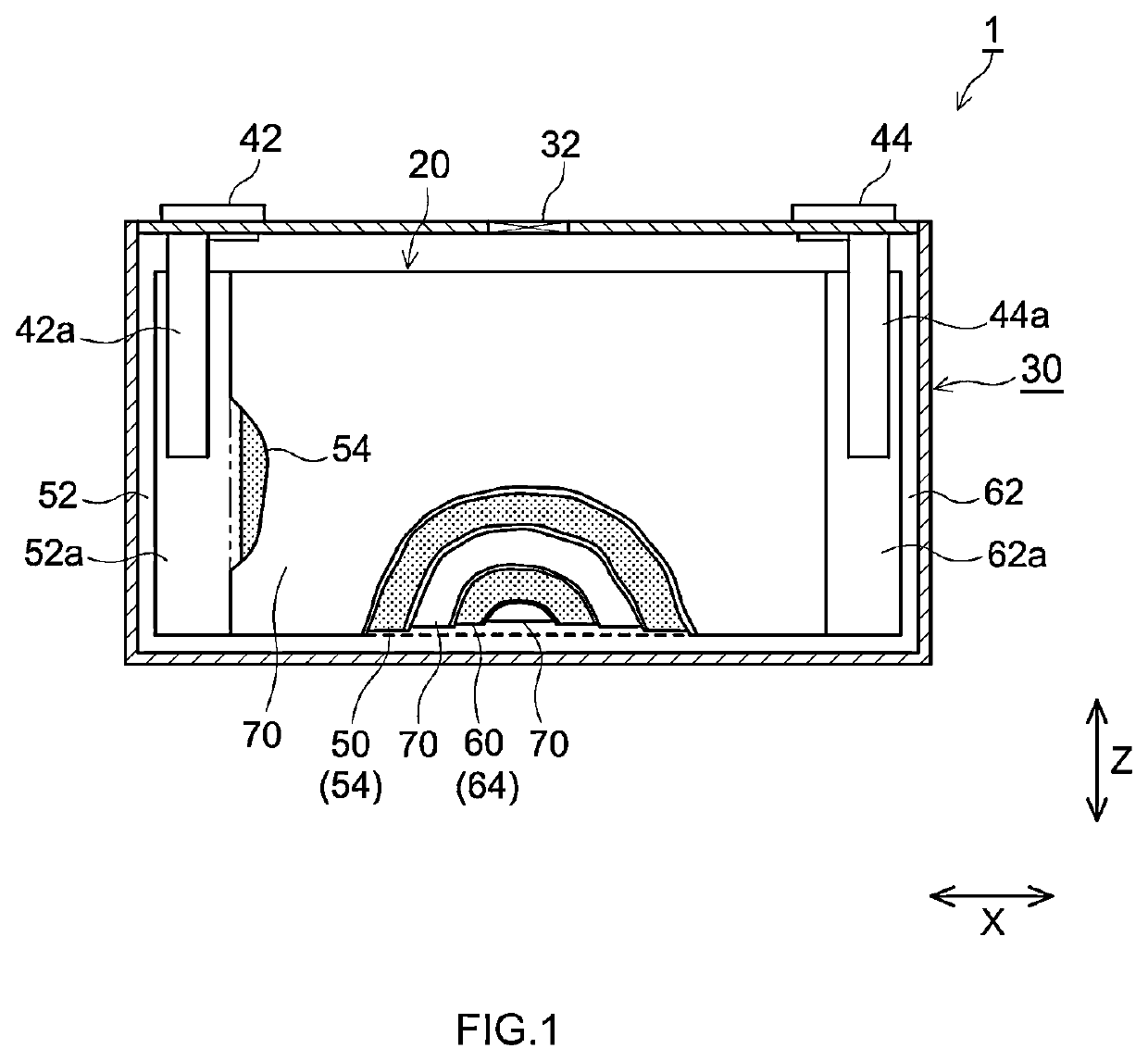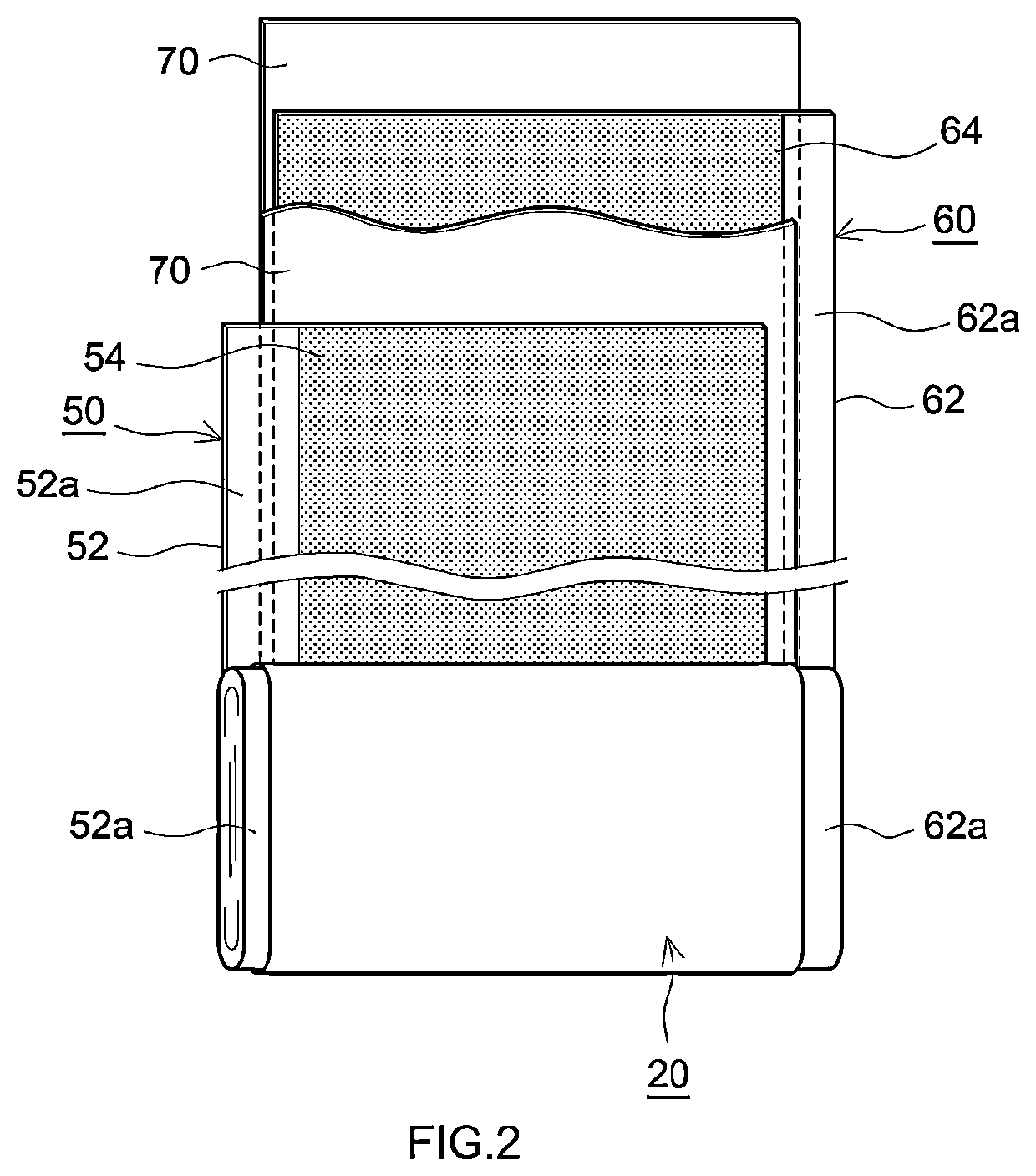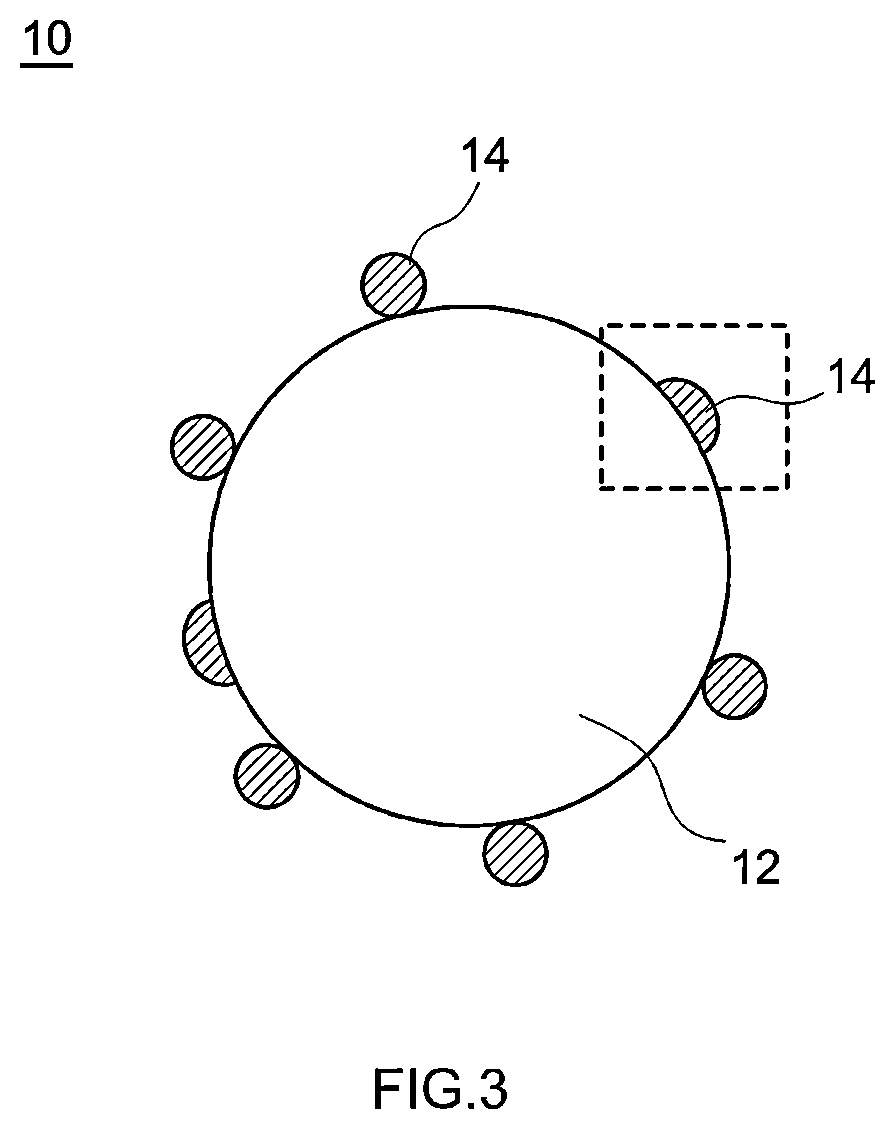Positive electrode active material and nonaqueous electrolyte secondary battery using the positive electrode active material
a technology of active materials and active materials, applied in the field of positive electrode active materials, can solve the problems of insufficient low temperature output characteristics, and achieve the effect of suppressing the increase in resistance and excellent low temperature output characteristics
- Summary
- Abstract
- Description
- Claims
- Application Information
AI Technical Summary
Benefits of technology
Problems solved by technology
Method used
Image
Examples
example 1
[0064]First, an aqueous solution obtained by dissolving a sulfuric acid salt of a metal other than Li was prepared. For example, when a LiNi1 / 3Co1 / 3Ni1 / 3O2 particle having a layered structure was manufactured as the core part, an aqueous solution including nickel sulfate, cobalt sulfate, and manganese sulfate so that the molar ratios of Ni, Co, and Mn became 1:1 :1 was prepared in a reaction vessel. NaOH and aqueous ammonia were added to the aqueous solution in the reaction vessel for neutralization, thereby crystallizing composite hydroxide including other metals than Li to serve as the precursor of the core part. The resulting composite hydroxide and lithium carbonate were mixed at prescribed ratios. For example, when a LiNi1 / 3Co1 / 3Mn1 / 3O2 particle having a layered structure was manufactured as the core part, the composite hydroxide and lithium carbonate were mixed so that the molar ratios of (Ni+Co+Mn):Li became 1:1. The mixture was burnt at a temperature of 870° C. for 15 hours....
examples 2 to 5
[0067]LiNi1 / 3Co1 / 3Mn1 / 3O2 as the core part, and brookite type TiO2 and Li2TiO3 as titanium-containing compounds were charged into a mechanochemical device, and were subjected to a mechanochemical processing at a number of revolutions of 6000 rpm for 30 minutes. The amount of the brookite type TiO2 and Li2TiO3 at this step was changed, thereby changing the abundance ratio (A / B) of the Ti abundance (A) as titanium dioxide (TiO2) and the Ti abundance (B) as the LiTi composite oxide. The powder after the mechanochemical treatment was subjected to a heat treatment at a temperature of 500° C. for 1 hour. As a result of this, at least some of Ti of the titanium-containing compound was incorporated in a solid solution in the surface of the core part. In this manner, the active materials of Examples 2 to 5 were obtained.
[0068]Comparative Example 1
[0069]LiNi1 / 3Co1 / 3Mn1 / 3O2 was used as it was (i.e., without being subjected to a mechanochemical treatment) as an active material of Comparative Ex...
examples 6 to 11
[0104]LiNi1 / 3Co1 / 3Mn1 / 3O2 as the core part, and brookite type TiO2 and Li2TiO3 as titanium-containing compounds were charged into a mechanochemical device, and were subjected to a mechanochemical treatment at a number of revolutions of 6000 rpm for 30 minutes. By changing the amount of the brookite type TiO2 and Li2TiO3 with respect to the amount of the core part, the amount of Ti for every 100 parts of the metal elements except for the alkali metals included in the core part was changed. The powder after the mechanochemical treatment was subjected to a heat treatment at a temperature of 500° C. for 1 hour. As a result of this, at least some of Ti included in the coating part was incorporated in a soli solution in the surface of the core part. In this manner, the active materials of Examples 6 to 11 were obtained.
[0105]Observation of Positive Electrode Active Material
[0106]By performing element mapping using TEM-EDX as described above, it was confirmed that at least some of Ti of th...
PUM
| Property | Measurement | Unit |
|---|---|---|
| thickness | aaaaa | aaaaa |
| thickness | aaaaa | aaaaa |
| thickness | aaaaa | aaaaa |
Abstract
Description
Claims
Application Information
 Login to View More
Login to View More - R&D
- Intellectual Property
- Life Sciences
- Materials
- Tech Scout
- Unparalleled Data Quality
- Higher Quality Content
- 60% Fewer Hallucinations
Browse by: Latest US Patents, China's latest patents, Technical Efficacy Thesaurus, Application Domain, Technology Topic, Popular Technical Reports.
© 2025 PatSnap. All rights reserved.Legal|Privacy policy|Modern Slavery Act Transparency Statement|Sitemap|About US| Contact US: help@patsnap.com



